Card Transactions in the e-Commerce World
The way payments are made nowadays is radically changing. People are using all kinds of devices (e.g. via smartphones and tablets) to shop, pay the rent, book a trip or make any other types of transactions. Thousands of companies are competing and cooperating at the same time to enable and simplify the flow of transactions and the transfer of related information from one party to another. Players combine forces to facilitate the “ready-to-use payment system” as we know it nowadays.
In their 2016 Payments Ecosystem report BI Intelligence drills even further into the payments industry to explain how a broad range of transactions are processed. According to the report, 2016 was a breakpoint year for the industry – payments companies improved securities, expanded their mobile offerings and accredited more digital purchases than ever before. Additionally, it is noted that the industry leverages alternative technologies. This new, developing sector could disrupt the processing ecosystem. Devices ranging from refrigerators to smart watches now feature payment capabilities, which will bring changes in consumer payment behavior.
Global payments revenues for 2016 have been growing at rates in excess of expectations according to McKinsey & Company’s most recent research. According to the forecast, tempered but still healthy revenue growth of 6% annually is expected through 2019.
The evolution of the payments ecosystem
Transaction-to-digital brought a period of rapid transformation for the payments industry. Payments used to be a simple one-on-one transaction. Today, however, the payments ecosystem has evolved into a complex global machine. This world of global payment processing now includes card networks, gateways, acquirers, processors, ISOs/MSPs and more.
To understand the full picture one must be familiar with all these players. So let’s break them down and go through each one briefly:
- Acquirers are typically banks that work with merchants to allow them to accept payments. In order to do so they provide them with paying terminals, processing services and a bank account where the incoming funds would be deposited. Processors are responsible primarily for data transmission and security. Sometimes acquirers and processors could be referred to as the same thing – such as acquirers like Chase Paymentech who process their transactions in-house.
Other acquirers hire processing companies to handle transactions. There are 2 types of processors in the card payment system. Front-end processors which make sure the customer has enough funds to make the purchase and back-end processors which are responsible for the settlement of the funds. - Issuing banks, or issuers, provide consumers and businesses with debit and credit cards connected to checking or credit accounts. They could also be the merchant’s acquiring bank.
- Card networks represented largely by Visa and MasterCard have the functions of routing transactions between issuers and acquirers and setting the rules by which everyone operates in the market. Card networks set the interchange fees charged by issuing banks and resolve disputes between different parties.
Other players in the industry are the Independent Sales Organizations (ISOs) and Merchant Service Providers (MSPs). They act as intermediaries between merchants and acquirers/processors so that the banks don’t have to sell their services to millions of merchants. ISOs and MSPs sell payment-services including payment terminals. They function as a customer service that the merchant can contact if needed. There is no significant difference between an ISO and an MSP; MSPs are registered with MasterCard, whereas ISOs are registered with Visa. Both businesses are being affected by the mobile point-of-sale (mPOS) where new mPOS devices are a lot cheaper than traditional POS devices.While ISOs and MSPs could service the old devices in the past, this is not the case with new ones where they could be replaced for insignificant cost in case of a functional problem. - Payment gateway businesses are specific to e-commerce companies, serving essentially as the online version of a payment terminal and a processor for online businesses. Gateways primarily act as the portal through which e-commerce merchants connect to acquirers but they also provide added services like analytics and reporting for their merchants. As the number of mobile usage increases and merchants are taking their businesses online gateway providers expand with some outstanding examples of more than a 100% YoY growth according to BI Intelligence Payments Ecosystem report. This trend seems to be continuing with a fast pace as we see online purchasing increasing every year.

The payment transaction is the foundational process that the payments industry is built on.
Stages of the card transaction processing
To understand how a card transaction is managed we have to look into the three stages of payment-card processing:
- Authorization – the process of transaction data going to an acquiring bank, which then sends an authorization request to the customer’s issuing bank. the issuing bank sends an authorization code through the card network to the acquirer, which sends it back to the merchant to complete the transaction (if no issues are found, such as lack of funds).
- Batching and Clearing – at this point the purchase is complete but the merchant is still waiting for payment. The aggregation of all the day’s transactions, goes to the acquirer, which then requests payment on the merchant’s behalf from the necessary card networks. These networks then send requests for funds to the appropriate issuing bank.
- Funding – the stage when the issuing bank sends the funds to the acquirer through the card network, minus a small interchange fee. The card network also takes a minuscule assessment fee and transfers the funds to the acquirer, which finishes the clearing process.
Payment processing services for e-commerce
Services previously provided by banks are now covered by the new Fintech companies such as PayPal, Stripe, Klarna and others, serving as a Payment gateway business.
Getaways are specific to eCommerce companies, where they serve as the online version of a payment terminal and a front-end processor for online businesses. Gateways act as connector between the eCommerce merchants and the acquiring bank. Such services started playing a more significant role in the payments ecosystem as more and more merchants are building an online presence.
For instance, when the customer is buying online, at the moment of payment he or she will be required to pay via Stripe, where Stripe is the component allowing:
- the client to select their method of payment and card type
- collect client’s money;
- at the end of the day, bundle all the transactions that take place over the course of a day and send it to the acquirer
- transfer money back to the merchant with all interchange fees calculated
Companies like Ingenico, for instance, are very strong at this type of services. Their Payment Processing Services are based on a Payment Processing Platform. To Connect to this Platform, they provide different web-based and mobile interfaces depending on client’s needs. To transact on the Platform, they provide a number of processing services. This way they deliver a wide variety of international payment options to their customers, as well as access to a broad range of card acquiring and alternative payment products. By developing this component, companies in the field can accommodate any type of payment: Bank payments, direct debits, Visa, Mastercard, e-wallets like PayPal, MobilePay, etc.
This sector, covering Money Services Businesses (MSBs) comes with heavy transaction volumes that utilize a complex, global banking partner network. Timeliness of insight into the lifecycle of the payment and its settlement has implications for scalable operations as well as the level of service to the customer and their payee. Deployment of a robust reconciliation solution is critical to supplying operational insight and delivery, as well as providing needed financial control.

Card transaction lifecycle and payments reconciliation
It is common for organizations in the Payment Processing sector to split their transactions to guaranteed payments and unguaranteed payments.
- Guaranteed Payments – A scenario where a client wants to buy goods from an online store. In order to make the purchase, they would have to insert a valid card number. At that point the payment processing component will check with the customer’s issuing bank which holds the customer’s deposits or credit associated with their account. If the designated amount is present, the platform would block it and only then it will continue with the client’s purchase. That way merchants can rest assured that they will receive a payment.
At month end the business’ internal records have to match to what is being recorded by the Gateway system. The reconciliation is essential to ensuring that internal records are correct and correspond to the external report.
To facilitate these needs ReconArt has the capability to accept a rich variety of file formats, and to manipulate and normalize data source records. External data can be enriched to mirror internal records, and multiple external data sources can be reconciled together against internal data.
- Unguaranteed Payments – A situation when a customer is purchasing a product online and the website issues a payment order that has to be paid in a bank. In such case there are no guarantees if the payment will be made or not.
When an order comes in the internal system it will stay there to indicate that a payment is expected. The payment may be settled in few hours, few days or longer; wrong amount of money can be transferred; or wrong preferences can be placed. Incoming electronic payments may have limited client or invoice information.
Recognizing client credits and applying payments to outstanding accounts may be difficult and time consuming.
In ReconArt meaningful data from any number of systems can be brought in as reference data and stored in lookup tables which can be used to enrich and update the data. Automation of payment posting and reconciliation allows a business to accurately and automatically post and mark invoices as paid based on specific business priorities and rules. Outstanding items resolution can be optimized by configuring aging reports and notifications.
- Fees. If we have a $100 transaction made by the client, by the end of the process the merchant would receive $98 of them because of fees; Once the issuing bank receives a request for funds it sends the requested amount back to the acquirer via a card network, minus an interchange fee of about $1.75. The card network takes out an additional small fee as an assessment fee and passes the funds to the acquirer, which completes the clearing process. In the final stage, the acquirer subtracts a discount fee and deposits the remaining amount in the merchant’s account.
Payment processing platforms are a big help in such cases with the capability to bundle all the transactions for the day, subtract all necessary fees and pure the amount into the merchants account.
As a next step comes the reconciliation process which can automatically check if the total amount for the day represents the amount of all the individual transactions for that same period of time.
ReconArt allows for automated recognition of Bank and other Fees and related Journal Entries. With the ability to logically tie, group and match items from different data sets, ReconArt can automatically execute complex business rules, as well as identify exception items and flag them with user-defined codes.
- Variance items. When, for example, a customer wants to pay in RUB but the merchant doesn’t have a Rubles account – the payment would be converted to another currency which the merchant can accept. Discrepancies can appear because of the different currency of the settlement. If, for example, the merchant has three destination currencies (e.g. accounts in GBP, EUR and USD) then no matter in what currency the customer is willing to pay, the merchant will receive the payment in one of the destination currencies. This has to be taken into consideration, as companies usually have their algorithms for the different currencies which should be bundled together to achieve the best conversion results.
In ReconArt this is accomplished by creating sophisticated rules where business can predefine criteria on which the system will aggregate the transactions together. ReconArt includes functionality which enables business users to automatically enrich data based on a variety of factors, including exchange rate (FX rates are fully supported within the system), country of origin, and source currency. This can be then placed as secondary criteria after the settlement date, which is typically used as primary criteria. Once ReconArt has aggregated all these together it waits for the bank statement to flow in. Once that’s loaded into the system, ReconArt does the reconciliation and displays all the differences, profit and loss from the exchange rates.
- Chargebacks. A widespread practice in the eCommerce business is the situation where a customer buys clothes or other goods but then decides to turn it back or cancel the order. So, apart from payments, other processes to keep in mind during reconciliation are refunds and cancelations.
That makes generating reports (for example, chargeback reports) a common practice in the eCommerce field.
ReconArt can easily and automatically generate reports based on predefined logic, and automatically send them to relevant internal or external parties.
Payments reconciliation and credit card reconciliation solutions
ReconArt is particularly attuned to the requirements of the Payment Services industry. Our wide experience in the space ensures that the needs of our Payment Services clients are well-supported by broad range of capabilities. To include:
- Automated sourcing of bank and other financial account activity data.
- Fully supported financial institutions and service providers across the globe, including thousands of banking institutions, credit/debit card providers, and others.
- Experience with almost every Gateway system like Stripe, Adyen, PayPal, Sage, Klarna, etc.
- Automated mapping and onboarding of bank statement data. Major banks in Europe and US covered via direct import of SWIFT file formats (and camt. in Europe).
- Processing orders from internal systems, automatically imported in a CSV, Excel or other format.
- Automated matching of bank statement activity and of incoming client credits to outstanding client obligations, including complex business rules.
- Multi-currency capabilities.
- Recognition of Bank Fees and related Journal Entries.
What clients say about ReconArt reconciliation software
“Ease of use was a big reason why we selected ReconArt™. As accounting and finance people, we are big Excel users and we found that the import, match rules, and other related functions in ReconArt™ allowed us to leverage already existing skills. As business users, we could really relate to the logic of the system.”
– Kerry McGovern, Director of Treasury at Viewpost®
“Many products promise the ability for users to manage configurations themselves, ReconArt is the first product within my experience that lives up to this promise. Our users can manage building new reconciliations, adjusting rules and import/export processes, along with rolling back imports that need to be adjusted with little to no IT involvement.”
– Thomas Walker, IT Enterprise Applications Analyst at Calgary Co-Op
References:
1. http://www.businessinsider.com/the-payments-industry-explained-2014-12
2. http://www.mckinsey.com/industries/financial-services/our-insights/how-the-payments-industry-is-being-disrupted

 follow our blog
follow our blog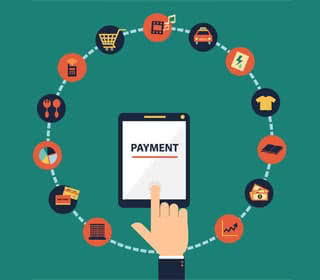
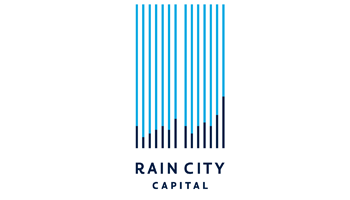
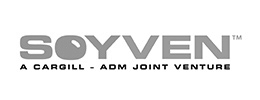

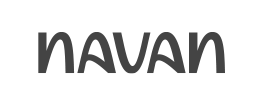






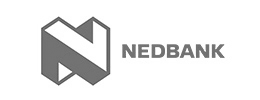


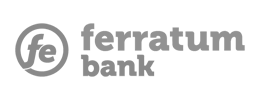


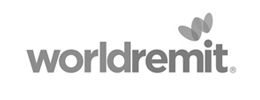






 Quick response
Quick response

